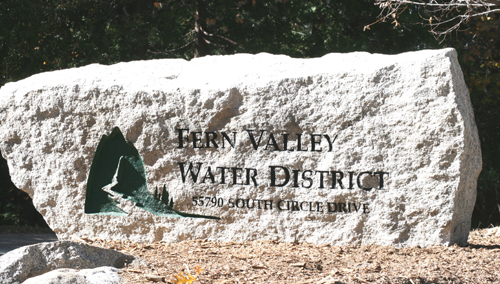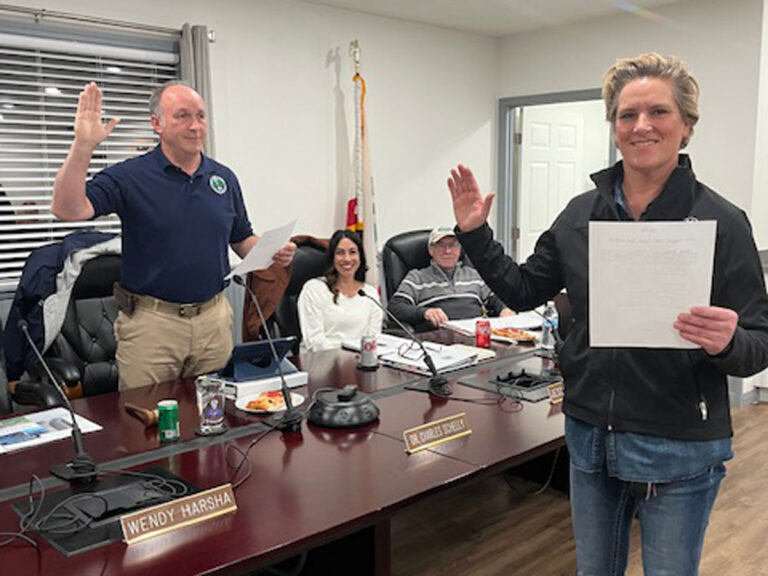Confusion over status of radio meter reading system purchase
Miscommunication between the Idyllwild Water District (IWD) board of directors and General Manager Michael Creighton was on display at the Aug. 21 board meeting.
The first discrepancy occurred when the board was considering the purchase of a radio system to read the district’s water meters. However, about 200 radios for the commercial and larger residential customers were ordered by mistake. The radios have not been installed and they have not been paid for yet, according to Creighton. He made it clear that he needed board approval to move forward.
The radio devices will transmit meter data daily to the IWD office. This will eliminate the need for staff to drive the streets and read the meters.
Robert Gallegos of Zenner Performance Meters Inc. in Banning presented his firm’s product during the meeting. Essentially, a radio transmitter is connected to the water meter. It will transmit usage data to a central collecting device. On a daily basis, the water usage data would be retransmitted to IWD.
The Zenner equipment is compatible with 99% of water meters, according to Gallegos. The radios are compatible with all IWD meters, according to Creighton.
Besides eliminating the staff time to drive by each meter, criteria in the software can be used to identify continuous water usage over a period of time. This will help identify possible leaks on the customer side of the meter. Currently, usage is collected monthly. Consequently, many customer leaks go undetected for days or weeks.
“For leaks, one criterion might be any water usage for 24 hours over three days,” Gallegos suggested.
“This would be good for customer service of part-time users,” noted Amy Hawley, IWD’s administrative assistant.
Creighton offered the board two options for pursing the radio meter reading system. The first would be a full districtwide commitment, which would cost about $243,000.
The second option involves two phases. In the first phase, IWD would purchase sufficient equipment for all commercial meters and the largest residential meters. Later, when the district is ready for phase two, IWD could purchase equipment for all of the remaining residential meters. The combined cost for the two-phase approach, according to Creighton’s memorandum, was $202,000.
When Director David Hunt questioned the $40,000 difference, Creighton did not have an immediate explanation.
Later, he told the Town Crier, “Sorry for the confusion. In my proposal for phase 1, I rounded [the cost] up $40,000, just for incidentals.”
Then, Hunt asked if the attachments to the memorandum were costs estimates or invoices for equipment already purchased. Creighton replied, ”Yes, we have ordered some equipment. It was an error. Somebody mistakenly ordered it.”
At that point, the discussion of which option to use was ended. Director Peter Szabadi requested a full report on what has been purchased and moved to table any further action until the board reviews the report and knows what commitments have already been made.
Saturday hours
The other issue, which drew a rebuke from the board, was Creighton’s request to reverse the July decision to open the office on Saturdays. While the board voted to abandon the Saturday hours all together, several members disagreed with Creighton’s principal objection.
He offered several reasons ⎯ one being that separating staff creates some problems because their work is intertwined, resulting in inefficiencies.
But Creighton also thought the vote was not appropriate since the change in hours was not specifically on the board’s agenda.
Board President Charles Schelly argued that the agenda cannot identify every nuance of how an issue might evolve during its debate. Since board members had not discussed whether to open the office on Saturdays before the meeting, they were obeying the Brown Act, California’s Open Government law. The actual motion and vote were the result of an open discussion in a public meeting, Schelly emphasized.
Agreeing with him was Szabadi. Hunt, who had made the motion to open on Saturdays at the last meeting, initially said he was willing to revise his vote based on the recommendation.
However, it was actually Schelly and Director Les Gin who changed their votes. Hunt and Director Steve Kunkle continued to support the Saturday office hours. Szabadi and Gin favored rescinding the Saturday openings. After a significant pause, Schelly cast his vote for the rescission. He abstained in the July meeting vote.
Annexation
The board did accept Creighton’s recommendation to avoid any annexations into the sewer district until he can prepare a report on the current wastewater treatment plant capacity and options for expansion or replacement.
Several water users have come to IWD for annexation of their properties into the Improvement District #1 (sewer district). Creighton expressed several concerns about the plant’s capacity, particularly given it’s 50 years old.
Currently, 107 parcels within the sewer district have not yet connected to the sewer lines. Being in the sewer district, they have a right to connect to the sewer line. Consequently, Creighton is hesitant to expand usage until he can improve its reliability.
Also, over the past year, more infiltration, ground water and runoff from the streets has been seeping into the sewer pipelines. For example, the average daily volume at the treatment plant in June was higher than July, although fewer visitors were in town during June. The greater usage was runoff from the May rains, he said.
Related to these issues, Creighton alerted the board that improving the plant’s capacity might necessitate renegotiating the lease with U.S. Forest Service since the waste treatment plant is on forest land.
The board voted unanimously to accept Creighton’s recommendation to cease annexations until the treatment plant can be assessed.
Hiring freeze
Schelly pulled the item to revoke the hiring freeze during the 4-day, 10-hour work evaluation. This will be on the next meeting’s agenda, according to Creighton.
Water production
In water business, IWD’s July production was the greatest in nearly two decades. During July, IWD produced 13.9 million gallons, which is 3.7 million (35%) more than in July 2018. Between 2007 and 2009, when annual production was close to 100 million gallons, IWD never produced more than 11.5 million gallons in any month.
Creighton attributed some of the increased water production to mainline water leaks on Rockdale Drive and Saunders Meadow Road. In addition, the pipeline replacement from South Circle and Village Center drives resulted in water losses during the month. The third contributor was accidental pipe breaks while a new ATM machine was being installed on Village Center Drive.
During January and February, the freezing temperatures also caused some pipeline breaks. Since January, total IWD water production has been 58.8 million gallons. During the same period in 2018, water production totaled 52.9 million gallons, 11% less.
If water production resumes its normal usage during the remainder of 2019, IWD annual production will likely exceed 102 million gallons, the most of any year. The greatest one-year production was 99.9 million gallons in 2007.
The large water production also generated $173,000 in water sales, while July’s expenses were $123,400.
Special meeting
Idyllwild Water District will hold a special meeting at 6 p.m. on Wednesday, Aug. 28 at the Idyllwild Water District located at 25945 Hwy. 243. Meeting is to evaluate General Manager Michael Creighton.





